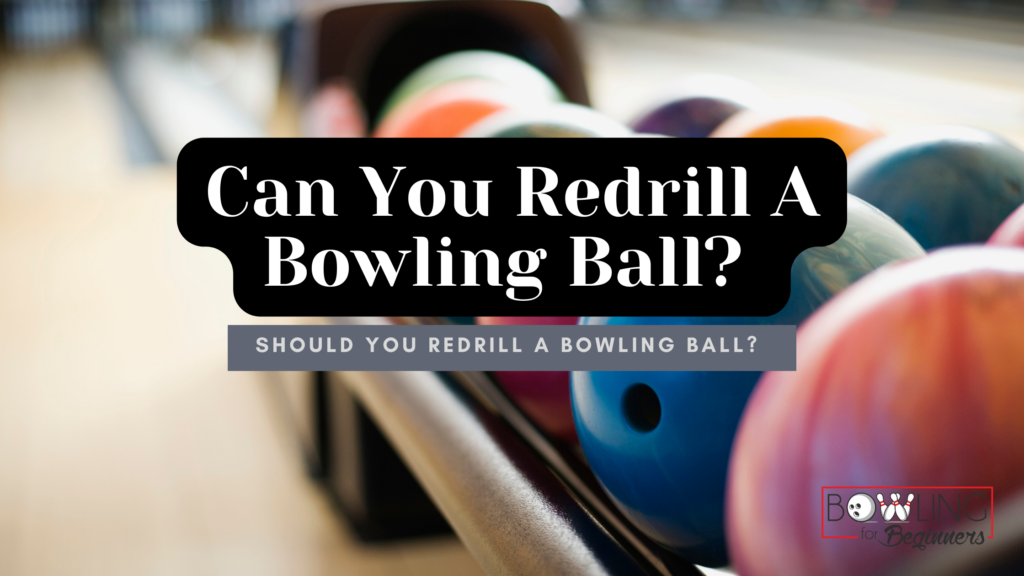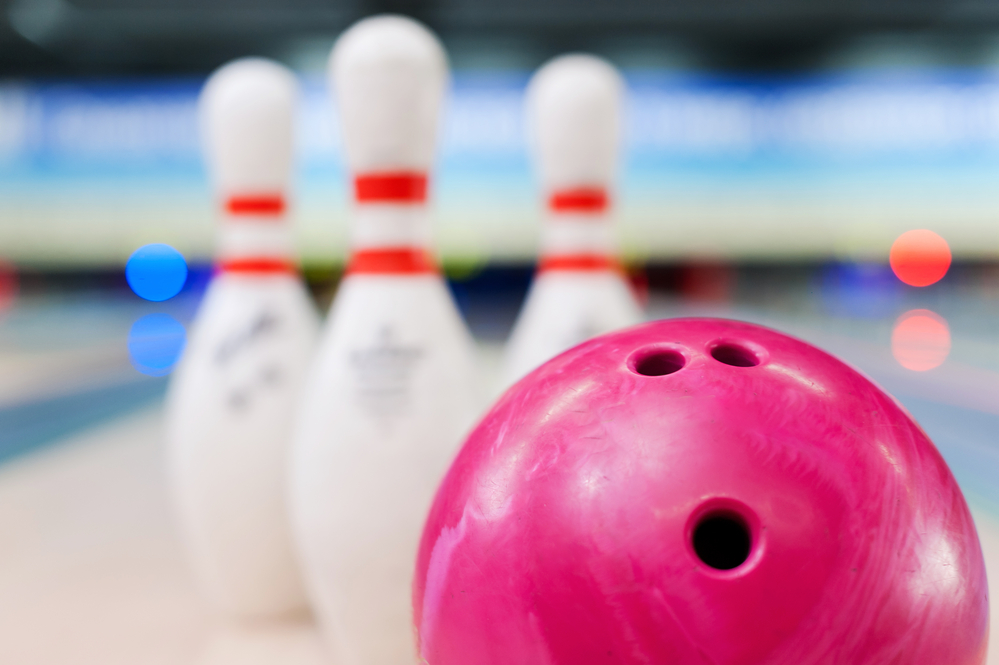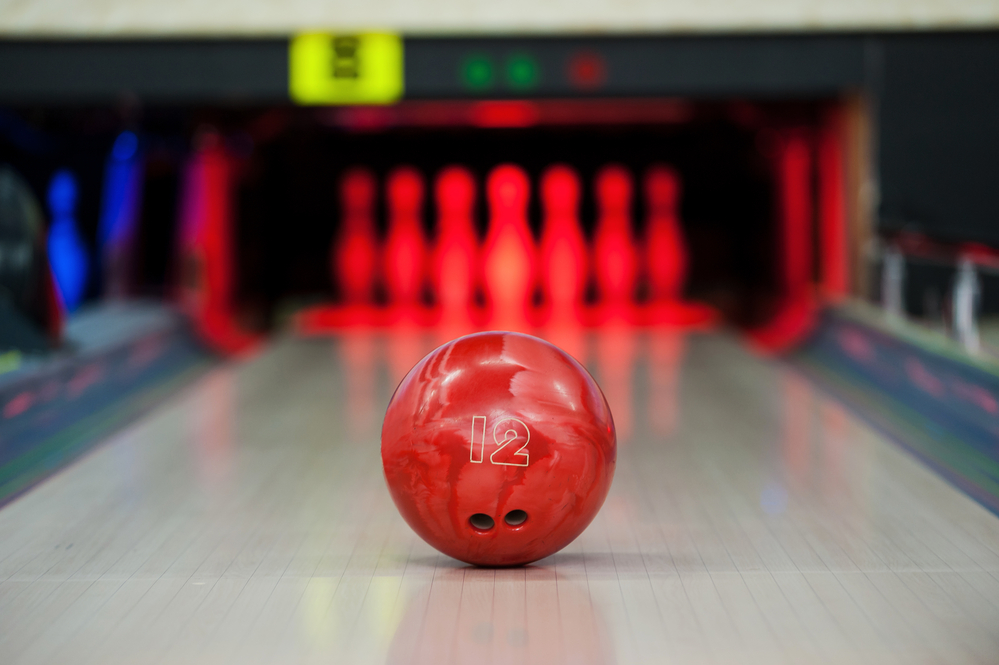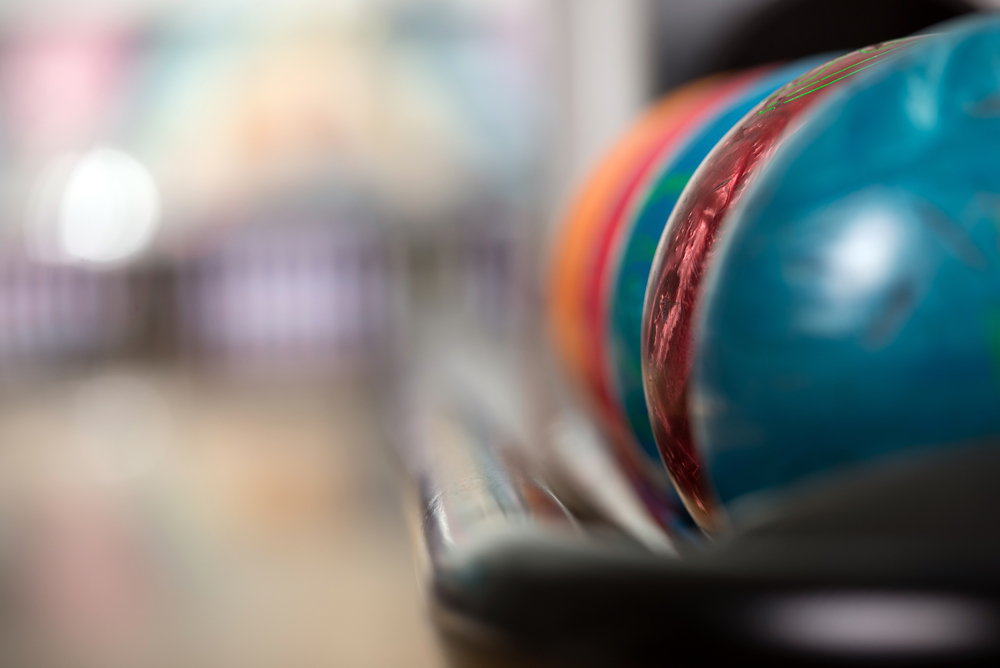
If you’re considering buying a used bowling ball but are concerned that it may not fit your hand measurements, we’ll bet you want to know your options.
Can you redrill it? Or will you have to look for another ball?
We’ve got the answers you need. Keep reading to find out whether you can redrill a bowling ball. Let’s get right into it!
Contents
Can You Redrill a Bowling Ball?
Yes, it’s 100% possible to redrill a bowling ball.
Redrilling a bowling ball is a very common practice in the world of bowling.
It involves plugging the existing finger holes in a bowling ball with hard epoxy and redrilling new holes to the owner’s specifications.
This is usually done to give bowlers an edge during games.
Redrilling a bowling ball effectively "tailors” it to your hand, ensuring the finger holes have the proper depth and spacing to optimize your performance.
The process of plugging and redrilling a bowling ball can be done either at home with the proper tools and materials or by a professional at a bowling pro shop.
Though you may not have heard about the redrilling process before, professional, or at least habitual, bowlers redrill their bowling balls to accommodate their specific grip requirements. In fact, you’re very likely to see many balls in play at your local alley that are redrilled and plugged balls.
Here are some general ball redrilling steps to give you an idea of what to expect:
- Plug the holes. You’ll need to have the existing holes “plugged” or filled with a hard epoxy or resin. This can be done either at home with a plug kit or by a professional at your local pro shop.
- Drill new holes. After the holes have been plugged and the epoxy hardened, a specialized drill is used to create new holes in the bowling ball with your desired spacing, angle, and depth.
- Sand down the holes. Either you or a professional will then sand down the holes to ensure smoothness.
- Wait. You’ll wait for a few days for the epoxy to set before using the plugged bowling balls.
Key Takeaways
- Redrilling a Bowling Ball is Feasible: It's possible and common to redrill a bowling ball by filling the old holes with epoxy and drilling new ones to fit your hand better, enhancing grip and performance.
- Procedure Involves Professionals or DIY: You can have the ball redrilled at a pro shop or do it yourself with the right tools. This process includes plugging old holes, drilling new ones, and sanding for smoothness.
- Multiple Redrillings Affect the Ball: While technically unlimited, redrilling a ball multiple times removes coverstock material and alters its weight, which might impact its performance and regulatory compliance.
- Costs Vary by DIY or Professional Service: Doing it yourself costs $150-$250, factoring in the purchase of a plugging kit and drill bits. Professional services at a pro shop range from $50-$70.
- Weigh Pros and Cons Before Deciding: Redrilling can save money and improve your game but risks damaging the ball if done improperly. Consider the ball's condition and your requirements before proceeding.
How Many Times Can You Redrill a Bowling Ball?

Technically speaking, a bowling ball can be plugged and redrilled an unlimited number of times so long as the bowling ball core remains intact.
Still, every ball will reach its limit at some point. Each time a ball is redrilled, a small amount of the ball's coverstock is removed. After being plugged and redrilled several times, the ball will become more epoxy than resin.
Another factor to consider when redrilling a bowling ball multiple times is that every redrilling session removes one to two ounces of top weight from the ball.
Altering the top weight of the ball can affect its movement. What’s more? If you are bowling as part of a league, you will have to get your redrilled ball weighed by a professional to ensure the top weight is within the regulatory limits.
How Long Does It Take To Redrill a Bowling Ball?

The amount of time it takes to redrill a bowling ball varies depending on the epoxy used to plug the ball and the experience level of the person doing the drilling.
Generally speaking, the ball plug epoxy will take 15-20 minutes to harden. Once the epoxy has set, the holes can be drilled and sanded within 45 minutes or less.
In all, it takes an hour or less to redrill and fill bowling ball holes if it’s done by a professional.
If you are plugging and redrilling the ball yourself, it is difficult to put an exact number on how long it’ll take to complete the process, but taking your time is paramount to ensuring the ball is not permanently damaged.
How Much Does It Cost to Redrill a Bowling Ball?

The costs associated with plugging and redrilling a bowling ball are determined based on whether you’re doing the modifications yourself or paying a professional.
There are bowling ball plugging kits available online for $100 to $200 and bowling ball drill bits available for $56.
Assuming you already own a drill, this brings the final cost of redrilling a bowling ball at home to $150 - $250.
Though additional fees may be involved, most bowling pro shops offer redrilling services for $50-$70.
Pros and Cons of Redrilling a Bowling Ball

Once a bowling ball has been redrilled, it is permanently altered. So, before you buy the supplies and redrill your bowling ball at home or pay a professional to do it, you need to consider all of the pros and cons involved. We’ll do that in this section.
Pros of Redrilling a Bowling Ball
- Redriling a bowling ball is cheaper than buying a new custom-fit ball. Many bowlers opt to buy a used ball online and have it plugged and redrilled per their custom measurements and grip preferences.
- Customizing a ball can dramatically improve your bowling performance. You get to choose between several hole depths, angles, and placement configurations when customizing your bowling ball. These modifications allow for different grip styles, which can maximize your control over the ball and its overall performance during a game.
Cons of Redrilling a Bowling Ball
- Plugging and redrilling a ball too many times can and will eventually cause damage to a bowling ball's coverstock (the outer shell) and could potentially render it useless should the coverstock crack or become otherwise damaged.
- Plugging and redrilling a bowling ball yourself is risky. If you are unfamiliar with the structure of a bowling ball, it’s possible to drill too deep and damage the core, which would ruin the ball’s balance and make it no longer usable.
- You will not be able to immediately use your ball after plugging and redrilling it. The epoxy (used when plugging the ball) needs time to fully set before it can withstand the impact of a game.
- The costs associated with plugging and redrilling a bowling ball can quickly add up. In some cases, bowlers end up paying more for the redrilling than they would a new bowling ball.
| Key Points | Details |
|---|---|
| Feasibility | Yes, it's possible and common to redrill a bowling ball to fit hand measurements better. |
| Process | Involves plugging old holes with epoxy, drilling new holes, and sanding for smoothness. Can be DIY or professional. |
| Redrilling Limits | Technically unlimited, but physical and performance limitations exist with multiple redrillings. |
| Cost | DIY costs range from $150-$250. Professional services at pro shops range from $50-$70. |
| Considerations | Assess ball condition and modification impact. Consider pros (cost-effectiveness, improved grip) and cons (potential damage, altered performance). |
Should You Redrill a Bowling Ball?

Your decision to redrill a bowling ball depends on two main factors:
- How you plan on using the ball. Whether you want it to have more hooking potential or to roll straight.
- The condition of your ball. Has it been redrilled before? What’s the condition of the coverstock?
If the bowling ball you would like to have redrilled is in a compromised condition, it may not be worth trying to have it altered. Doing so could potentially damage it beyond repair.
In addition, redrilling a used bowling ball with a drastically different configuration than the one you hope to achieve may not be a wise decision either. This could affect the weight distribution of the bowling ball.
Having said that, if the bowling ball that you wish to plug and redrill is in good condition and only requires a minor altering, having it redrilled is a more cost-effective option than buying a new custom-fit bowling ball.
Related Articles
My Final Words
Redrilling a bowling ball is a practical and cost-effective method of customizing a ball to your specific hand measurements and grip preferences, significantly enhancing your game. The process, which can be undertaken at home or by professionals in a bowling pro shop, involves plugging old holes with a hard epoxy and drilling new ones tailored to your needs. However, it's crucial to assess the condition of your ball and the potential impact of multiple redrillings, as these can affect the ball's performance and compliance with league regulations.
Ultimately, if your bowling ball is in good condition and requires minor modifications, opting for redrilling over purchasing a new custom-fit ball can be wise. This approach saves money and extends your equipment's life, allowing for a more personalized bowling experience.
Kira Byrd, a Certified Fraud Examiner, holds a B.S. in Accounting from the University of Alabama at Birmingham. With a passion for bowling from her childhood, Kira has poured her expertise and personal experiences into creating and nurturing Bowling For Beginners. Kira's mission is to meet new bowlers where they are and guide them toward consistently achieving higher scores. With a focus on skill development and strategic techniques, she empowers readers to take control of their game and unlock their true potential.
Bowling For Beginners embodies strict editorial integrity, ensuring reliable and unbiased information. Kira's commitment to delivering valuable insights and practical strategies is reflected in every article. Here's an explanation of our editorial policy and how we get money.





